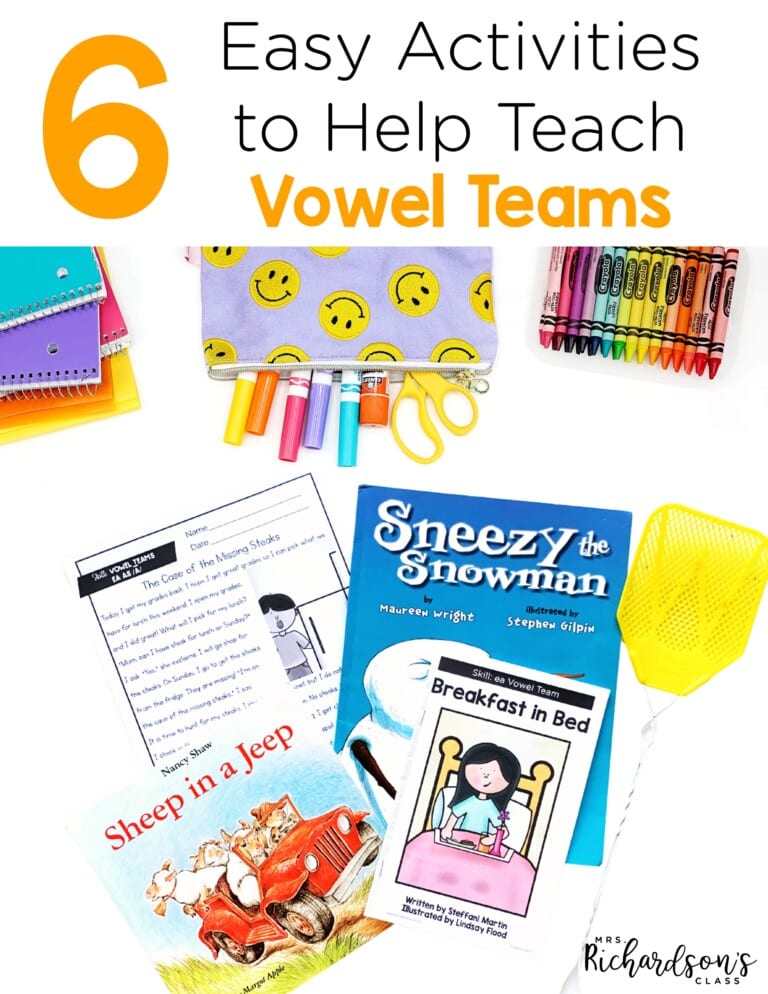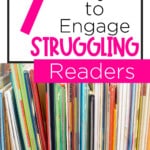


At one time or another, we’ve all as teachers had that one student that dreaded coming to the guided reading table. The student who didn’t want to read to you or with you or out loud for anyone. Maybe even this student visibly hangs their head when it comes to reading. Reluctant readers are often discouraged readers who don’t feel engaged or successful in reading.
The good news is that we can help reluctant readers become engaged readers! Students who feel discouraged when it comes to reading might not believe in themselves, but we as teachers can believe in them and support them so they can experience success, and maybe even joy in reading.
Let’s dive into a few ways we can engage reluctant and discouraged readers in the classroom.
One easy way to show reluctant readers that they are readers is to provide books that they can read. Jan Burkins and Kari Yates call these, “read-all-the-words” books. I love that! Use easier leveled readers or decodable books that students can read independently for practice. Even nonreaders can practice with picture books or logos and words they might recognize. When readers feel successful, they have an “I can do this” attitude!
Another way to engage discouraged readers is to track and monitor their progress in reading. Because I don’t want them to be caught up on their reading level (and don’t recommend sharing this with them), I would track other things like:
You can also grab a FREE reading assessment toolkit to use on my blog HERE! There are so many different ways to track and show students their progress outside of reading levels for all readers from nonreaders all the way up to second grade level readers.
Showing students success proves to them that they can keep experiencing success in reading.
After tracking and updating reluctant readers (or all of your students!) on each of their own reading progress, don’t forget to celebrate their accomplishments. Even the smallest improvements should be celebrated!
I know you are busier than ever, so celebrating doesn’t have to be complicated. Here are a few easy ways to celebrate reading success:
Learn what a discouraged student might be interested in. Then, see if you can find books on that topic or related to it to use in guided reading or in read alouds. Try both fiction and nonfiction books, too.
Depending on each student’s reading level, you could choose reading materials that are outside of the typical guided reading book like a comic strip or book, cookbooks, kids’ magazine articles, etc.
Why do we teach reading? So that students can become strong readers, so that they can ultimately read to learn and read for pleasure. Learning and enjoyment are the two main goals for readers as adults. Don’t forget to keep reading fun in the classroom, too!
This could look like letting students choose their own books or topics from time to time. Maybe you decorate your guided reading area or independent reading areas in a fun theme or with special lighting. Perhaps students can have flexible seating at the guided reading table. Get creative and keep reading fun!
Another way to engage discouraged and reluctant readers is to get them a reading buddy. This could be an older or younger student that your reader can read to. Once they’ve practiced a book in guided reading a few times, or a poem from a poetry notebook, let them go read it to their buddy!
Students almost always enjoy getting to go to another classroom or sit out in the hall and feel like a big helper to younger kids or feel like a big kid reading to older kids.
Specific teaching points can effectively equip young readers with important skills and knowledge they need to become engaged in a text. The tricky thing is that you can’t pre-plan teaching points.
A good teaching point is one that is identified as a student is reading so that you can take what they did and then coach them through it. You identify the teaching point as you are observing in guided reading. There are four types:
By equipping students with strategies and skills they need in reading, we can help them feel encouraged and more successful.
While it can be frustrating to have reluctant readers who don’t ever seem engaged in reading, just remember that these little learners are often just discouraged. Let’s motivate them to continue growing in reading and show them that they in fact are readers!

Want to use the latest research to boost your readers during small groups? This FREE guide is packed with engaging ideas to help them grow!

I’m a K-1 teacher who is passionate about making lessons your students love and that are easy to implement for teachers. Helping teachers like you navigate their way through their literacy block brings me great joy. I am a lifelong learner who loves staying on top of current literacy learning and practices. Here, you’ll find the tools you need to move your K-2 students forward!


| Cookie | Duration | Description |
|---|---|---|
| cookielawinfo-checkbox-analytics | 11 months | This cookie is set by GDPR Cookie Consent plugin. The cookie is used to store the user consent for the cookies in the category "Analytics". |
| cookielawinfo-checkbox-functional | 11 months | The cookie is set by GDPR cookie consent to record the user consent for the cookies in the category "Functional". |
| cookielawinfo-checkbox-necessary | 11 months | This cookie is set by GDPR Cookie Consent plugin. The cookies is used to store the user consent for the cookies in the category "Necessary". |
| cookielawinfo-checkbox-others | 11 months | This cookie is set by GDPR Cookie Consent plugin. The cookie is used to store the user consent for the cookies in the category "Other. |
| cookielawinfo-checkbox-performance | 11 months | This cookie is set by GDPR Cookie Consent plugin. The cookie is used to store the user consent for the cookies in the category "Performance". |
| viewed_cookie_policy | 11 months | The cookie is set by the GDPR Cookie Consent plugin and is used to store whether or not user has consented to the use of cookies. It does not store any personal data. |




2 Responses
I do appreciate your work and I am truly sorry I was not able to join the training. Overwhelming work during this time.
That’s totally okay!! You take care of YOU! 🙂